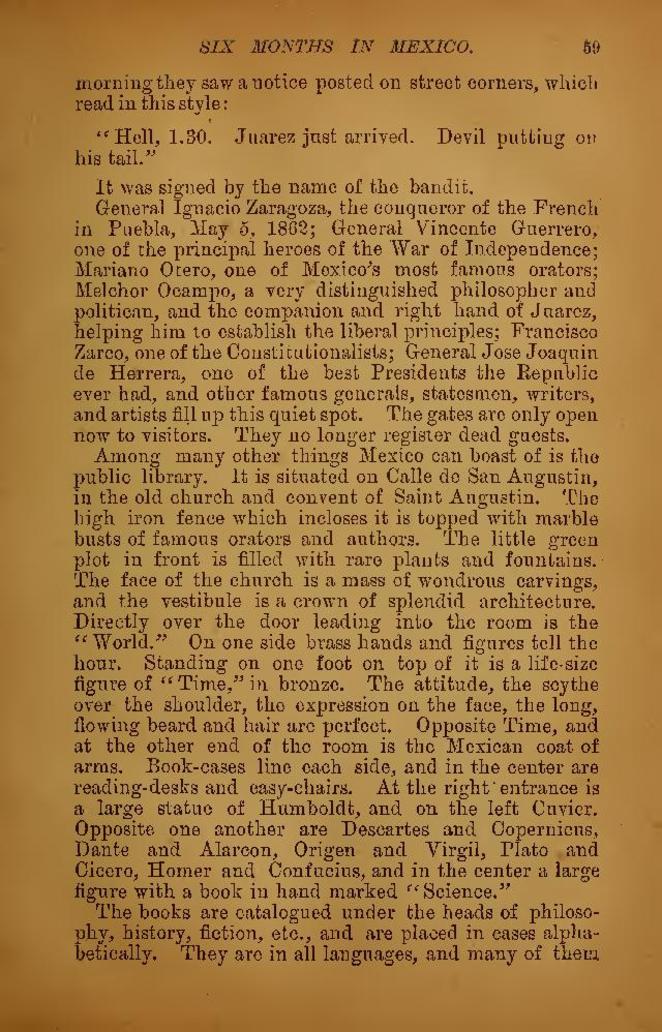morning they saw a notice posted on street corners, which read in this style:
"Hell, 1.30. Juarez just arrived. Devil putting on his tail."
It was signed by the name of the bandit.
General Ignacio Zaragoza, the conqueror of the French in Puebla, May 5, 1862; General Vincente Guerrero, one of the principal heroes of the War of Independence; Mariano Otero, one of Mexico's most famous orators; Melchor Ocampo, a very distinguished philosopher and politican, and the companion and right hand of Juarez, helping him to establish the liberal principles; Francisco Zarco, one of the Constitutionalists; General Jose Joaquin de Herrera, one of the best Presidents the Republic ever had, and other famous generals, statesmen, writers, and artists fill up this quiet spot. The gates are only open now to visitors. They no longer register dead guests.
Among many other things Mexico can boast of is the public library. It is situated on Calle de San Augustin, in the old church and convent of Saint Augustin. The high iron fence which incloses it is topped with marble busts of famous orators and authors. The little green plot in front is filled with rare plants and fountains. The face of the church is a mass of wondrous carvings, and the vestibule is a crown of splendid architecture. Directly over the door leading into the room is the "World." On one side brass hands and figures tell the hour. Standing on one foot on top of it is a life-size figure of "Time," in bronze. The attitude, the scythe over the shoulder, the expression on the face, the long, flowing beard and hair are perfect. Opposite Time, and at the other end of the room is the Mexican coat of arms. Book-cases line each side, and in the center are reading-desks and easy-chairs. At the right entrance is a large statue of Humboldt, and on the left Cuvier. Opposite one another are Descartes and Copernicus, Dante and Alarcon, Origen and Virgil, Plato and Cicero, Homer and Confucius, and in the center a large figure with a book in hand marked "Science."
The books are catalogued under the heads of philosophy, history, fiction, etc., and are placed in cases alphabetically. They are in all languages, and many of them
